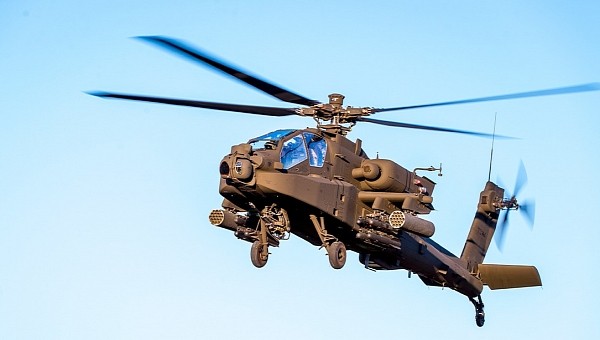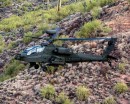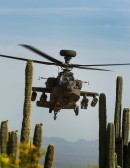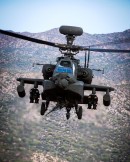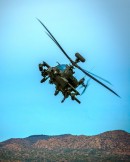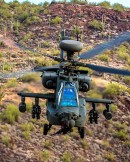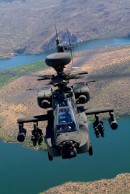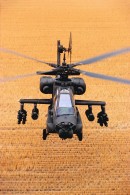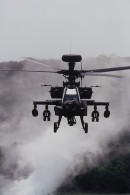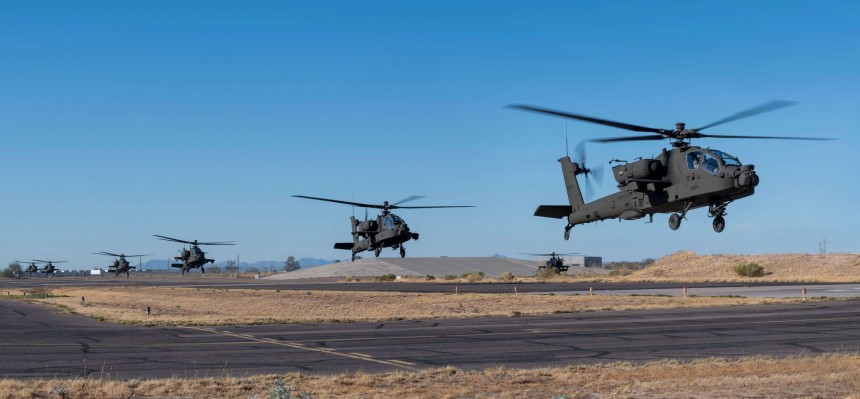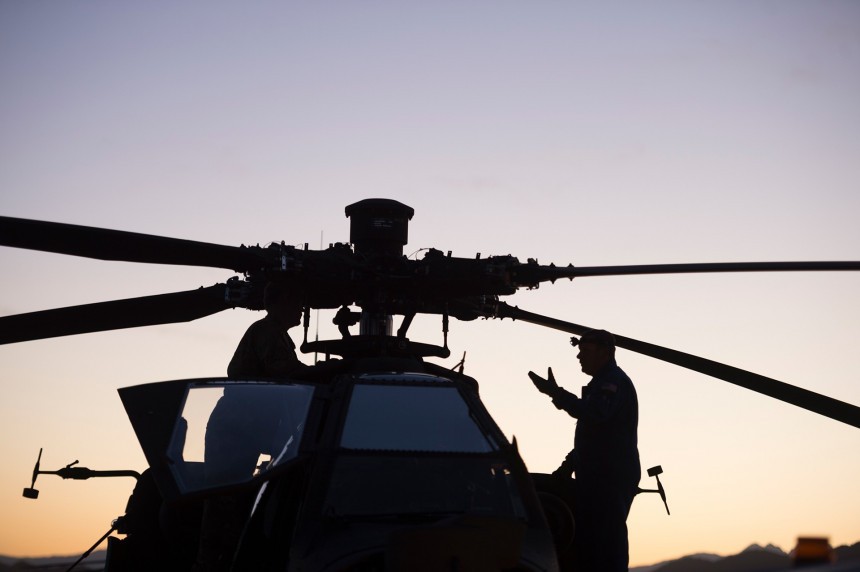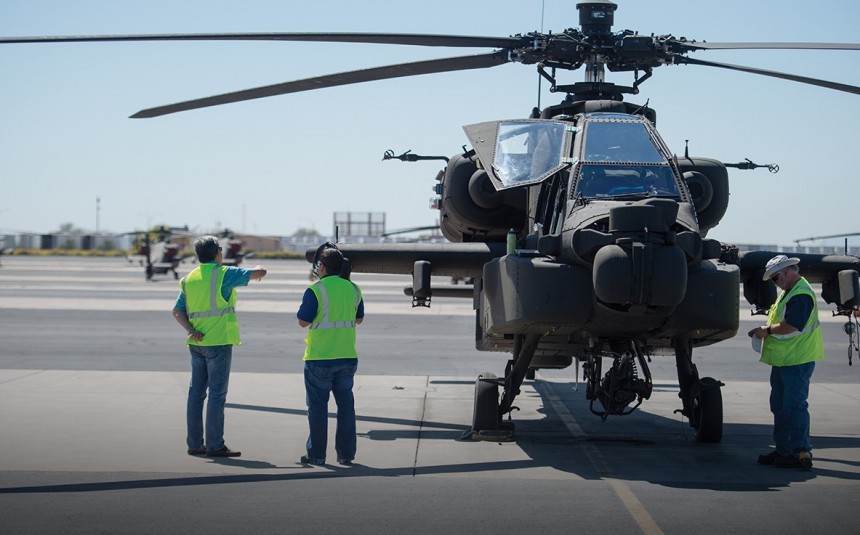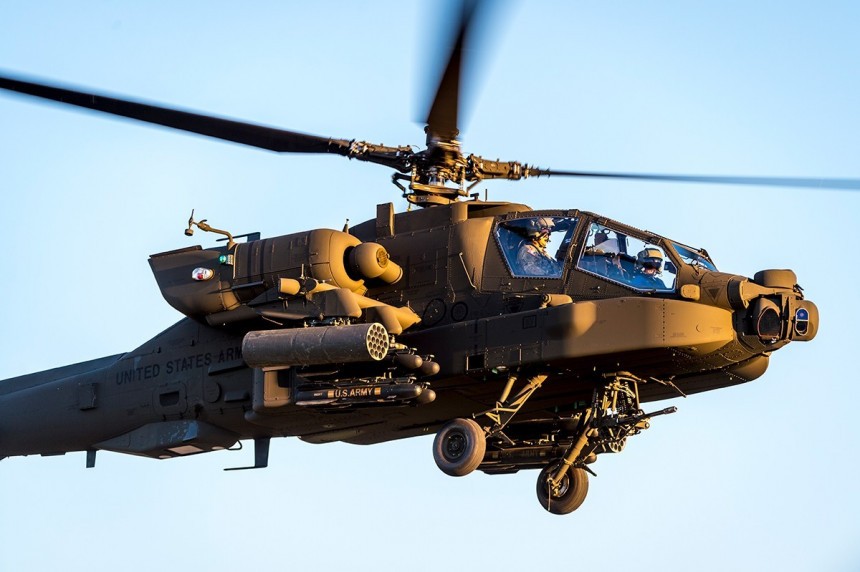The most famous attack helicopter on planet Earth is, without any shadow of a doubt, the Apache. For 40 years, the mighty horseman of the aerial combat Apocalypse has been the undisputed emperor of the skies.
Armed to the teeth, the Apache doesn’t understand the notion of “outgunned” – unless it refers to its adversaries, disrespectful of their numbers, armaments, and size. Do you know why there are no “An Apache AH-64 attack helicopter walks into a bar” jokes? Because the Apache keeps raising the bar on aerial warfare.
With over 2,500 units delivered worldwide since 1984 and nearly 2,000 serving under the star-spangled banner of the U.S. Military, the formidable machine passed another milestone recently. Five million combined flight hours – accounting only for the official records of Uncle Sam’s enlisted aircraft.
For statistics-loving geeks, that’s an average of 2,500 hours per aircraft. Over 1.3 million hours in the air were combat missions – more than 650 hours of battle for every Apache in the U.S. armed forces. That’s almost a month of uninterrupted war if we evenly distribute the numbers to each American AH-64.
Five million hours above ground is a staggering 570 years and nine months of continuous flight. Consider it from this hypothetical perspective if that doesn’t tell you much. If one single Apache AH-64 Attack Helicopter were to fly continuously at its maximum level flight speed of 150 knots (173 mph/278 kph) for all that time, it would cover the distance between the Sun and the Earth nine times over.
That’s nearly 35,000 trips around the Equator of our planet. Pretty hardcore. The Apache is one serious warbird whose service record speaks volumes about this fire-breathing dragon. Deployed to active duty with the U.S. forces in 1986, the Apache had several models throughout its four-decade-long history.
Each far exceeding the capabilities and technological supremacy of its predecessors, the various iterations of the helicopter have become a strong point in military tactics. The U.S. Army has operated A, D, and E-model Apaches, and the combat-ready list of 2023 includes the D-model aircraft in addition to the spearhead AH-64E.
Designed and built by Hughes Helicopters as a replacement for the AH-1 Cobra (the quintessential machine that proved the worthiness of the attack helicopter concept as an effective weapon), the Apache first took to the skies in September 1975.
Hard to believe the cutting-edge warship – that can identify, classify, and threat-prioritize 256 targets in less than a minute anywhere within 32 miles (50 km) of its location – is almost 48 years in the making. The age of digital warfare brought about critical changes in the way the Apache is used in the field.
Currently built by Boeing in Mesa, Arizona, the AH-64 serves nineteen national armed forces. Conceived as a twin-seat aircraft in authentic fighter aircraft design, the Apache can carry sixteen Hellfire missiles, seventy-six 2.75-inch (70-mm) rockets, and 1,200 rounds for the 30-mm cannon. The rapid-fire chain gun alone could pacify Hell itself with its 650 rounds-per-minute rate of fire.
Able to climb to 20,000 feet in around seven minutes from the second it leaves the ground – thanks to its 1,908.5 sqft (177.31 sqm) four-blade main-rotor area – the mighty Apache can stay airborne for over two-and-a-half hours. Armored to sustain direct hits from 23-mm rounds and equipped with self-sealing fuel compartments, the helicopter also boasts an extensive array of intricate target acquisition systems.
The AH-64E is the latest version of Apache, and its 2,000-shaft-horsepower General Electric T700-701D turboshaft engine is suitable for a combat range of 260 nm (300 mi / 480 km). Alternatively, when it doesn’t rain fire on its targets, the Apache has a ferry range of 1,024 nm (1,178 mi / 1,896 km) with additional fuel tanks installed on its stub wings.
With no payload, the standard Ah-64 weighs around five tons, but a mission-ready aircraft gains three extra tons for a gross weight of 17,650 lb (8,006 kg). Fully loaded, the helicopter’s maximum takeoff weight is a hefty 23,000 lb (10,433 kg).
Last October, Boeing announced that the famous rotorcraft would undergo a six-pack modernization program. Briefly, the drivetrain will get an upgrade to increase power, range, efficiency, and speed. The level-up armament systems include equipping the already-overkilling AH-64 with long-range precision munitions or directed energy weapon systems. The latter sounds a million times better – and easier to remember – in Star Wars parlance: “laser Apache.”
As of 2020, out of the 2,500 AH-64 attack helicopters put in service since 1984 (when the aircraft entered series production), 500 units are the latest E-model (itself with numerous variants). Planned to be produced until at least 2028, the Apache is deemed fit for duty for the next four decades – and an indiscriminate number of flight hours. Stick around; we’ll let you know when the ten-million threshold is reached.
With over 2,500 units delivered worldwide since 1984 and nearly 2,000 serving under the star-spangled banner of the U.S. Military, the formidable machine passed another milestone recently. Five million combined flight hours – accounting only for the official records of Uncle Sam’s enlisted aircraft.
For statistics-loving geeks, that’s an average of 2,500 hours per aircraft. Over 1.3 million hours in the air were combat missions – more than 650 hours of battle for every Apache in the U.S. armed forces. That’s almost a month of uninterrupted war if we evenly distribute the numbers to each American AH-64.
That’s nearly 35,000 trips around the Equator of our planet. Pretty hardcore. The Apache is one serious warbird whose service record speaks volumes about this fire-breathing dragon. Deployed to active duty with the U.S. forces in 1986, the Apache had several models throughout its four-decade-long history.
Each far exceeding the capabilities and technological supremacy of its predecessors, the various iterations of the helicopter have become a strong point in military tactics. The U.S. Army has operated A, D, and E-model Apaches, and the combat-ready list of 2023 includes the D-model aircraft in addition to the spearhead AH-64E.
Hard to believe the cutting-edge warship – that can identify, classify, and threat-prioritize 256 targets in less than a minute anywhere within 32 miles (50 km) of its location – is almost 48 years in the making. The age of digital warfare brought about critical changes in the way the Apache is used in the field.
Currently built by Boeing in Mesa, Arizona, the AH-64 serves nineteen national armed forces. Conceived as a twin-seat aircraft in authentic fighter aircraft design, the Apache can carry sixteen Hellfire missiles, seventy-six 2.75-inch (70-mm) rockets, and 1,200 rounds for the 30-mm cannon. The rapid-fire chain gun alone could pacify Hell itself with its 650 rounds-per-minute rate of fire.
The AH-64E is the latest version of Apache, and its 2,000-shaft-horsepower General Electric T700-701D turboshaft engine is suitable for a combat range of 260 nm (300 mi / 480 km). Alternatively, when it doesn’t rain fire on its targets, the Apache has a ferry range of 1,024 nm (1,178 mi / 1,896 km) with additional fuel tanks installed on its stub wings.
With no payload, the standard Ah-64 weighs around five tons, but a mission-ready aircraft gains three extra tons for a gross weight of 17,650 lb (8,006 kg). Fully loaded, the helicopter’s maximum takeoff weight is a hefty 23,000 lb (10,433 kg).
As of 2020, out of the 2,500 AH-64 attack helicopters put in service since 1984 (when the aircraft entered series production), 500 units are the latest E-model (itself with numerous variants). Planned to be produced until at least 2028, the Apache is deemed fit for duty for the next four decades – and an indiscriminate number of flight hours. Stick around; we’ll let you know when the ten-million threshold is reached.
